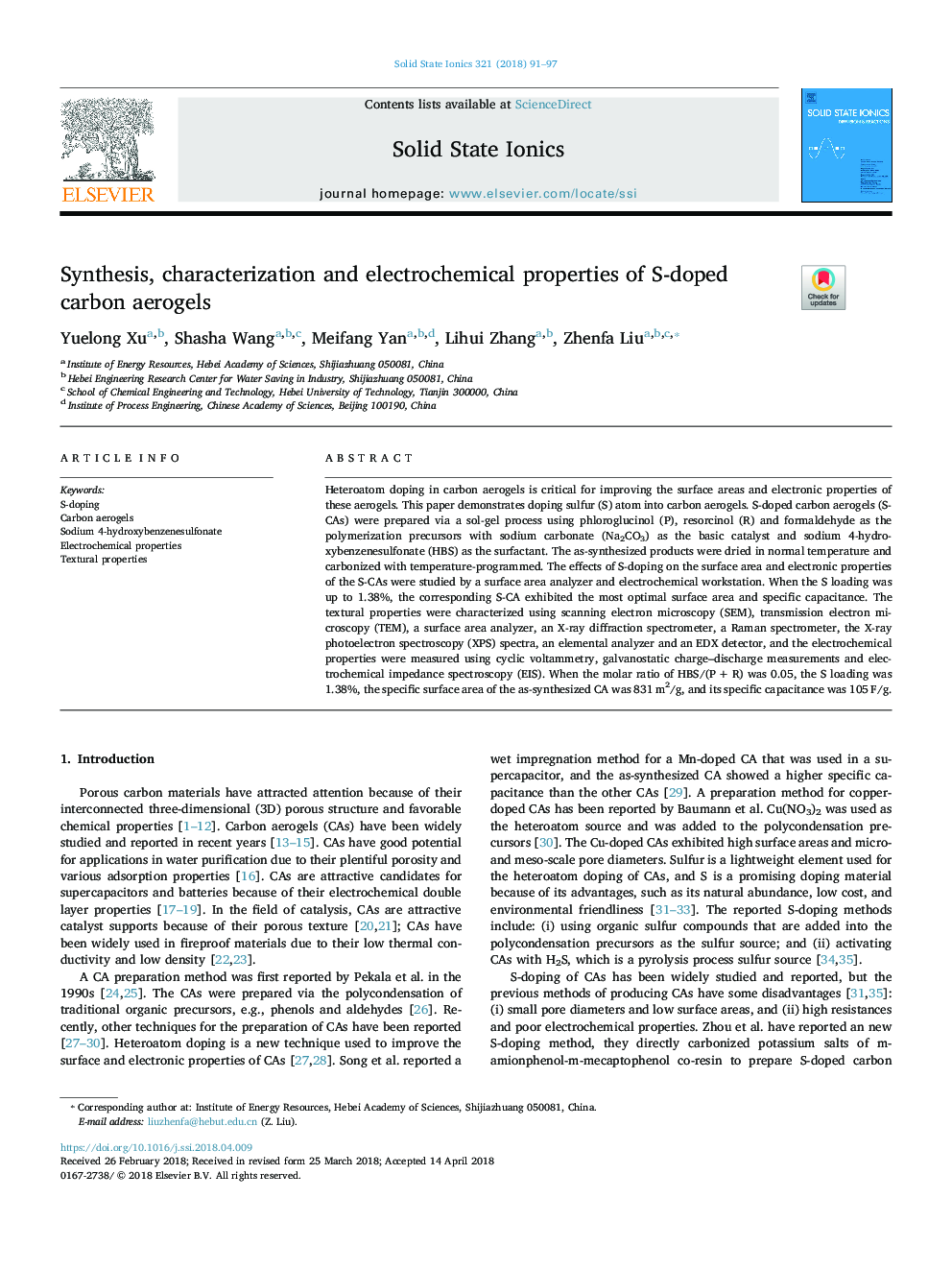| Article ID | Journal | Published Year | Pages | File Type |
|---|---|---|---|---|
| 7744294 | Solid State Ionics | 2018 | 7 Pages |
Abstract
Heteroatom doping in carbon aerogels is critical for improving the surface areas and electronic properties of these aerogels. This paper demonstrates doping sulfur (S) atom into carbon aerogels. S-doped carbon aerogels (S-CAs) were prepared via a sol-gel process using phloroglucinol (P), resorcinol (R) and formaldehyde as the polymerization precursors with sodium carbonate (Na2CO3) as the basic catalyst and sodium 4-hydroxybenzenesulfonate (HBS) as the surfactant. The as-synthesized products were dried in normal temperature and carbonized with temperature-programmed. The effects of S-doping on the surface area and electronic properties of the S-CAs were studied by a surface area analyzer and electrochemical workstation. When the S loading was up to 1.38%, the corresponding S-CA exhibited the most optimal surface area and specific capacitance. The textural properties were characterized using scanning electron microscopy (SEM), transmission electron microscopy (TEM), a surface area analyzer, an X-ray diffraction spectrometer, a Raman spectrometer, the X-ray photoelectron spectroscopy (XPS) spectra, an elemental analyzer and an EDX detector, and the electrochemical properties were measured using cyclic voltammetry, galvanostatic charge-discharge measurements and electrochemical impedance spectroscopy (EIS). When the molar ratio of HBS/(Pâ¯+â¯R) was 0.05, the S loading was 1.38%, the specific surface area of the as-synthesized CA was 831â¯m2/g, and its specific capacitance was 105â¯F/g.
Related Topics
Physical Sciences and Engineering
Chemistry
Electrochemistry
Authors
Yuelong Xu, Shasha Wang, Meifang Yan, Lihui Zhang, Zhenfa Liu,
